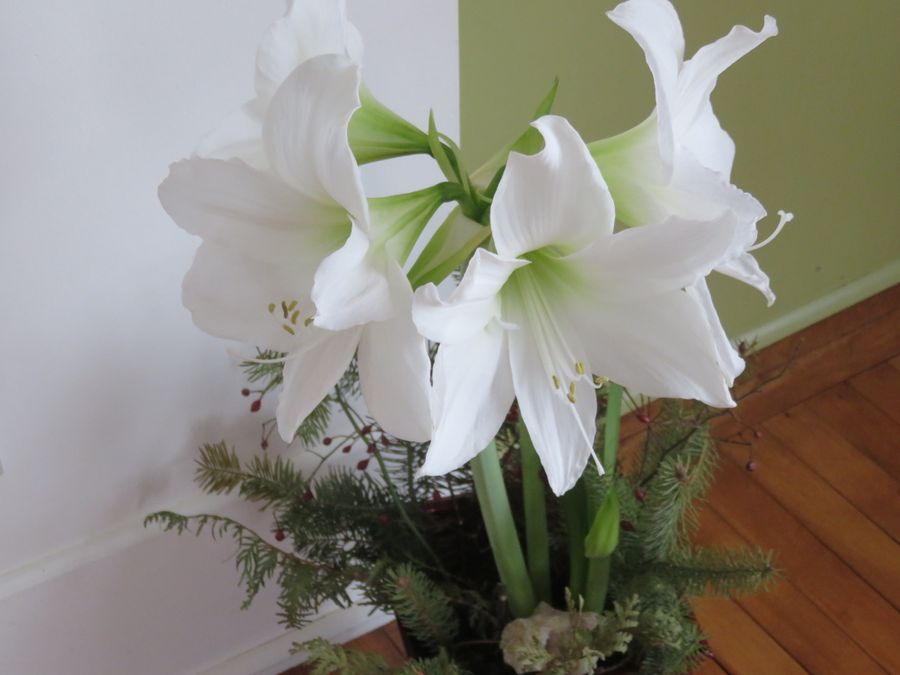The Blooming Amaryllis Encore
by Pegi Holtz and Grace Stapper
1. What is it really? Amaryllis’s big, voluptuous blooms in red, white, pink, stripes or doubles- have returned to the glory of their Victorian conservatory days. But guess what? Amaryllis is not amaryllis; it's hippeastrum. The plant with the Latin name Amaryllis is commonly known as belladonna lily.
2. From Mexico via Holland. Amaryllis is native to Mexico, but came via Holland first. It seems a roundabout route, but the Dutch were and are the world masters at hybridizing bulbs, and they worked their magic on amaryllis before it found its way to Canada in the 18th century.

3. After bloom care, to enjoy a re-bloom. After flowering cut the stem back to 2 inches above the bulb, do not cut the leaves. Let the plant grow on in well lit location. Move the plant outdoors, after all danger of frost is passed, into partial sun so the leaves can soak up all the energy possible to produce a healthy, well-fed bulb. It helps to sink the pot into the ground to guard against dehydration.
4. Summer in the sun. Bring inside before danger of frost and let it dry out completely. Force it into dormancy by placing it in a dark, cool location with no water for about six to ten weeks. You can force an amaryllis into dormancy by keeping it at about 5° Celsius. Bring it out of dormancy when a swollen flower bud appears. Don’t take it out if only leaves show. Then place it in full sun and give a good soaking, letting the excess water drain away. Don't leave the drainage tray full of water. Take particular care not to water the nose of the bulb.
5. The bulbs get bigger. Like many of us, amaryllis bulbs increase in girth as they get older, adding about half an inch each year. You'll need to re-pot every couple of years to accommodate the growth. A bigger bulb is always better, it will give larger and (often) more blooms.
6. The bulbs like it crowded. If you re-pot the bulb into good potting soil, choose a pot that is only an inch or two bigger than the bulb.
7. Not too deep! The three-times-as-deep-as-height rule you apply when planting bulbs outdoors does not apply to your potted amaryllis. Leave the top third of the bulb poking up above the soil.
8. Is it a dud? If your plant gets good leaves but doesn't bloom, give it a second chance before tossing it on the compost heap. Fertilize through the growing period with 20-20-20 and give optimal light without getting strong, direct sunlight that could scorch the leaves. Then follow the steps outlined above and chances are you'll be rewarded.
9. Watering. Amaryllis bulbs are particularly susceptible to rot if they're left in clammy quarters. Make sure the pot you use has drainage holes in the bottom. Water it only as required, letting it dry down somewhat between each watering.
Give it a try and get a second or third wave of enjoyment out of your amaryllis bulbs!